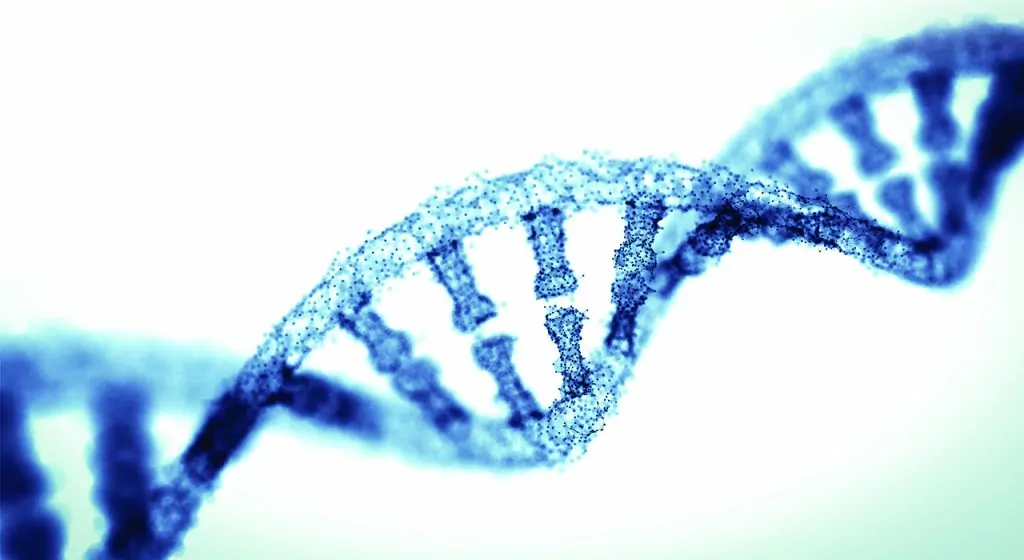Transgenderism is the latest political cause du jour, dominating media headlines, saturating academic deliberation, the subject of new laws and radical educational policies across the country. Lost in the debate, from either side, are the kids themselves.
It is important that, in so far as we are able, we ensure our part in this debate isn’t confused as being an attack on the dignity of individuals genuinely struggling with gender identity disorder. As psychologist Dr. Mark Yarhouse notes, in his 30 years of counseling patients struggling with gender identity, most who come into his office are not seeking to tear down the “social constructs” of maleness or femaleness. They are simply looking for help as they navigate these very troubled waters in these times of social change.
Today people who believe they were born the wrong gender are being encouraged by the intellectual elite in media, politics and academia to embrace that notion and run with it. That might mean they start identifying as the other gender, or it might mean undergoing surgery to try to resemble the other gender.
This must be strongly opposed. Why should Christians oppose it? Because we know it will hurt people! As one Canadian Reformed pastor said at a recent political rally, these new policies require us to love less. They silence genuine concern for transgendered kids, while advocating a celebration of an ideology that, by any measure of science and common sense, will do irreparable harm.
What is transgenderism?
The term “transgendered” is an umbrella term for the different ways in which some people might experience or express their gender – their maleness or femaleness – differently from people whose gender matches their biological sex. Put another way, transgenderism describes the experiences or expressions of a small proportion of the population who say there is a difference between their mind and their body when it comes to the question of whether they are male or female.
One of the debates within the social sciences today revolves around the question of whether we should bring the body into conformity with the mind (via hormone injections, male genitalia removal, breast augmentation, or other surgery) or bring the mind into conformity with the body (via counseling).
Perhaps the group that captures the most attention today are those who struggle with gender identity disorder, also known as gender dysphoria, a psychological phenomenon. We might hear them say something like, “I’m a woman trapped in a man’s body” or vice versa. According to the revised language of the Diagnostic and Statistical Manual of Mental Disorders, 5th Edition (the DSM‑5),
gender dysphoria refers to the distress that may accompany the incongruence between one’s experienced or expressed gender and one’s assigned gender.
Gender dysphoria is a rare ailment: according to the same manual, it manifests in only 0.005% – 0.014% of adult men and 0.002% – 0.003% of adult women. However, we can expect those numbers to increase dramatically as the popularity of the phenomenon increases with the fawning media coverage of transgender celebrities like Bruce/Caitlyn Jenner and the gender-bending behaviors of Jaden Smith (the son of actor Will Smith who “challenges gender stereotypes” by regularly wearing dresses and make-up, etc.). The celebration and indoctrination happening more and more in elementary schools across the country only exasperates the problem.
A somewhat related but separate condition happens when, due to genes, hormones, or body structures that differ from the norm, a child may have an “intersex condition” (in older literature, “hermaphrodites”). This could make it difficult to identify a child’s gender at birth – we live in a fallen world, and one of the results of that brokenness is that some people are born with malformed genitalia. This is not, however, what we’re talking about with transgenderism. An intersexed condition is a biological disorder, and should be distinguished from a transgendered person’s gender dysphoria, which is a psychological disorder. It is important to note that most intersex people are not lobbying to pass as the other sex or as a third sex, but are simply seeking to discover to which sex they belong. Their biological sex identification can typically be discovered through a chromosomal or blood test.
Truth with grace
We know from the creation story (see Gen. 1:27 and 2:18) that God created humankind in his image (imago dei) and that the wonderful mystery of that design includes the binary reality of the sexes: we are made either male and female.
That means a woman’s femaleness reflects something of the image of God, and that a man’s maleness reflects something of the image of God. The binary nature of humanity is implicitly confirmed in the words of Jesus in his discussions on marriage (see Matt. 19:4 and Mark 10:6) and in Paul’s directions to the new Christians in Corinth and Ephesus and to Timothy on the distinct responsibilities and natures of men and women. (See, for example, 1 Cor. 11:7-9; Eph. 5:22-33; 1 Tim. 2:12-14.)
To mar or to diminish the masculine and feminine diminishes our God-given identity as males or females. Both reflect the glory of God. This is probably why God forbade cross-dressing in Deuteronomy 22:5. This prohibition goes beyond whether boys can wear dresses (the clothing of men at the time of the exodus from Egypt probably resembled something more akin to modern female clothing today). The point is not the article of clothing per se; it’s the intentional diminishing or obscuring of masculine or feminine differences, which is an assault on our design.
It should be unsurprising that the sciences confirm this binary reality. With the exception of a few simple organisms, all creatures (including humans) are marked by a fundamental binary sexual differentiation: male or female markers are imprinted on every one of their trillions of cells. The testimony of biology, chromosomal data, and social-scientific evidence all confirm the essential biological binary of the sexes. (For more on this point, see my book review of Why Gender Matters.)
But the Bible does not only speak to the issue of gender confusion, it also speaks to how we should relate and communicate on this issue. The Bible reminds us that gentle answers turn away wrath, but harsh words stir up anger (Prov. 15:1) and that “gracious words are like a honeycomb, sweetness to the soul and health to the body” (Prov. 16:24). Jesus Christ fulfills this in his ministry and example.
“In the beginning was the Word, and the Word was with God, and the Word was God… And the Word became flesh and dwelt among us, and we have seen his glory, glory as of the only Son from the Father, full of grace and truth” (John 1:1,14).
Randy Alcorn calls this pairing of grace with truth a paradox, and one Christians must emulate: our speaking and relating and communing on this issue of transgenderism must be characterized by grace and truth. Where truth is conveyed without love, it is nothing but noise (1 Cor. 13:1). The truth needs love, and the truth communicated in love will be kind, patient, and will not be rude, irritable or boastful. (1 Cor. 13:4,5). But love also “rejoices in the truth” (1 Cor. 1:6) meaning that we cannot let our instinctive compassion run unfettered because that will end up hurting, not helping.
Having established this foundation, let’s examine some of the science and policy surrounding this phenomenon.
When helping hurts – medical testimony
Celebration of transgenderism is seen by some as the best way to assist transgender individuals. There is no evidence, however, that the negative outcomes associated with transgender identification – including higher rates of suicide and attempted suicide, overall mortality, and need for psychiatric inpatient care – are alleviated by accepting and encouraging alternative gender identities in those with gender identity issues.
The theory behind this celebratory approach to transgenderism is not scientific – it is political. Gender dysphoria is a psychological phenomenon. Gender fluidity – the idea that we can shift from one gender to another – is a concept that is socially constructed and normalizes gender dysphoria, and thereby impedes its diagnosis and treatment. To leave the dysphoria untreated is to leave struggling individuals without help, and to ignore experienced researchers in this field.
Johns Hopkins Hospital was one of the first institutions in the United States to perform so-called “sex change” operations. Dr. Paul McHugh, the chief psychiatrist there in the late 1970s, commissioned a study of the sex change program. Its authors found that
In a thousand subtle ways, the re-assignee has the bitter experience that he is not – and never will be – a real girl but is, at best, a convincing simulated female. Such an adjustment cannot compensate for the tragedy of having lost all chance to be male, and of having in the final analysis, no way to be really female.
Some 40 years later, Dr. Sander Breiner concurs, explaining that she and her colleagues had to tell the surgeons that “the disturbed body image was not an organic [problem] at all, but was strictly a psychological problem. It could not be solved by organic manipulation (surgery, hormones)”.
Many Canadian experts in the field of psychiatry, including those who regularly work with transgendered youth, have grave concerns about the politicization of this psychiatric issue. Toronto psychiatrist Dr. Joseph Berger says that some transsexuals “have claimed that they are ‘a woman trapped in a man’s body’ or [vice versa]. Scientifically, there is no such thing.” Dr. Ken Zucker sees the political approach to gender identity and fluidity as unsound. And Dr. Susan Bradley considers the political moves of some activists “disgraceful.” Dr. Paul McHugh, cited above, points out, “This is a disorder of the mind. Not a disorder of the body.” Canadian policy makers should take these warnings to heart.
Apotemnophilia: a comparison
Apotemnophilia is a neurological disorder characterized by an individual’s intense and long-standing desire for the amputation of a specific limb. It is a type of Body Integrity Identity Disorder (BIID). Some with this condition look for surgeons willing to perform an amputation of a healthy limb and some apotemnophiles have purposefully injured limbs in order to force emergency medical amputation. In 1997, Scottish doctor Robert Smith was performing these amputations before a public outcry brought them to a halt. What would the compassionate option be: to accommodate the person’s self-perception by amputating healthy limbs as Dr. Smith did, or to treat the psychological condition itself?
The comparisons between gender identity disorder, anorexia, apotemnophilia and other similar conditions are clear. As Dr. McHugh says,
It is not obvious how this patient’s feeling that he is a woman trapped in a man’s body differs from the feeling of a patient with anorexia that she is obese despite her emaciated, gaunt state. We don’t do liposuction on anorexics. Why amputate the genitals of these poor men?
What ought we to do as a compassionate society?
Alleviating the psychic distress of transgendered individuals requires nuanced answers. We hear about the high rates of suicide among the transgendered. Well, if we want to address this, we must distinguish between suicides that result from rejection by family, isolation, bullying, etc., (all of which are unacceptable) and suicides where psychiatric care is offered that seeks to resolve the dysphoria in keeping with their birth sex. This is not to say that bullying, rejection by family, isolation, etc., are not an issue for transgender people. They can be, and that type of behavior must be corrected. But the reality is that family rejection, isolation and bullying increase suicide risks for all youth, not just transgender youth.
The unfortunate politicization of this issue results in the condemning of anything less than full affirmation, reinforcement and celebration of the gender incongruence in transgender youth, a “solution” that compounds the problem. Where family and community walk alongside a transgender individual with love and compassion, all with the goal of resolving the dysphoria in keeping with the patient’s birth sex as much as possible, we predict the suicide rates will dramatically decrease, particularly because other coexisting issues can also be properly treated. The way we frame our approach to this issue is of the utmost importance.
A compassionate society must recognize the mental illness dimensions of gender identity disorder and reject the dangerous and unhealthy human experimentation of hormone treatments and surgical amputations and modification. A compassionate society gives space for expression of struggles and helps to answer the questions “who am I?” and “where do I belong?” without deconstructing gender. And a compassionate society affirms the inherent dignity and intrinsic value of every human being as either male or female, including those who struggle with confusion regarding their sexuality and gender.
Recommendations
In terms of scientific and social research, the field of gender identity is still relatively new. Unfortunately, when the State attempts a radically new policy response to transgenderism, it becomes an agent of forced social and cultural change without any standard or criterion of success, and without clearly understanding the possible outcomes.
Take just one example that illustrates this concern: in an effort to accommodate transgendered children, the provincial government in Alberta wants every school to work towards eliminating gender differences not only in the classroom, but even on sports teams and in change rooms. This is not the well-reasoned, scientifically-based public policy we should expect of our representatives.
Here are a few suggestions for better public policy as it relates to protecting transgendered youth and enhancing social and public policy.
- State actors must cease to use the phrase “sex assigned at birth” and maintain the scientifically accurate term “sex.” Sex is a biological reality. It is not assigned. To use the language of “assigned” instils a flawed assumption that any incongruence is a biological error, rather than a psychological
- Provinces must ban all gender reassignment surgery on children before the age of 18. Further, in light of the fact that those who have had sex reassignment surgery have higher rates of attempted suicide, surgical transition should be abandoned as a treatment option even for adults.
- Provinces must ban all cross-gender hormone treatment on children, including puberty suppressants, due to unacceptably high risks of depression, suicide and sterility. To chemically alter the natural and healthy development of a child with such incredible risks before the child can give their own informed consent is nothing short of child abuse.
- The State must provide ample room for civil society to respond to this issue. Parents, the medical profession, churches and other community groups must have the freedom to address gender dysphoria in their families and communities without threat of enforced ideological conformity by the State.
- Provinces must abandon laws that make gender reinforcement illegal. Such laws violate children’s rights and doctors’ conscience rights and interfere with parental decisions regarding the best interests of their children. For example, Ontario’s Bill 77 – which amended the Health Insurance Act and the Regulated Health Professions Act to prohibit services that seek to change the sexual orientation or the gender identity of patients – should be repealed. This law, and others like it, promote an ideological blindness at odds with the best interests of the patient.
- The terms “gender identity” and “gender expression” should be removed from law because the terms are based on subjective perceptions and cannot be objectively evaluated or measured. There is no consistent policy reason to protect transgenderism, but not protect trans-racism, trans-ageism, trans-ableism, or even trans-speciesism (all of which have manifested in recent years). Further, laws that add the terms “gender identity” and “gender expression” as protected grounds of discrimination such as those passed in Ontario and Alberta and being contemplated federally with Bill C-16 are unnecessary since all transsexuals are already protected in law, no less than anyone else.
- In the interim, we urge that a better balance of rights occur. In places where a reasonable expectation of privacy exists, (washrooms, women’s gyms, etc.) the biological measure of a person’s sex must be the determining factor for access. Due to the reality that there is no objective means to identify a transgendered person, this measure of preventative access can help protect against devastating consequences. Interestingly, spaces of privacy have become “gender-neutral.” Adding different genders has had the pernicious effect of subtracting the difference between the sexes expected in public, and removing the privacy and the shield for natural modesty appropriate to them in certain social contexts.
Conclusion
Gender matters because people matter. Maleness and femaleness are distinct and complimentary realities that correspond to our biological selves and go to the core of what it means to be human. When governments ignore or undermine this reality they do so to society’s detriment. While some children struggling with gender identity disorder may need exceptional care in their various situations, the State helps no one by “breaking down gender” across the province or country. Canadian politicians must be willing to take a stand for good public policy as it relates to gender and sexuality. With sound public policy, we can help our transgendered neighbors as they navigate these troubled waters in times of social change. Out of compassion for our transgendered neighbors, inspired by our duty to love them as ourselves, we need to speak out against an ideology that harms them.
It won’t be easy, but the right thing to do rarely is.
This article is adapted from a fully footnoted 2016 Policy Report for Parliamentarians on Gender Identity which is available at ARPACanada.ca. This first appeared in the Nov/Dec 2016 issue.













